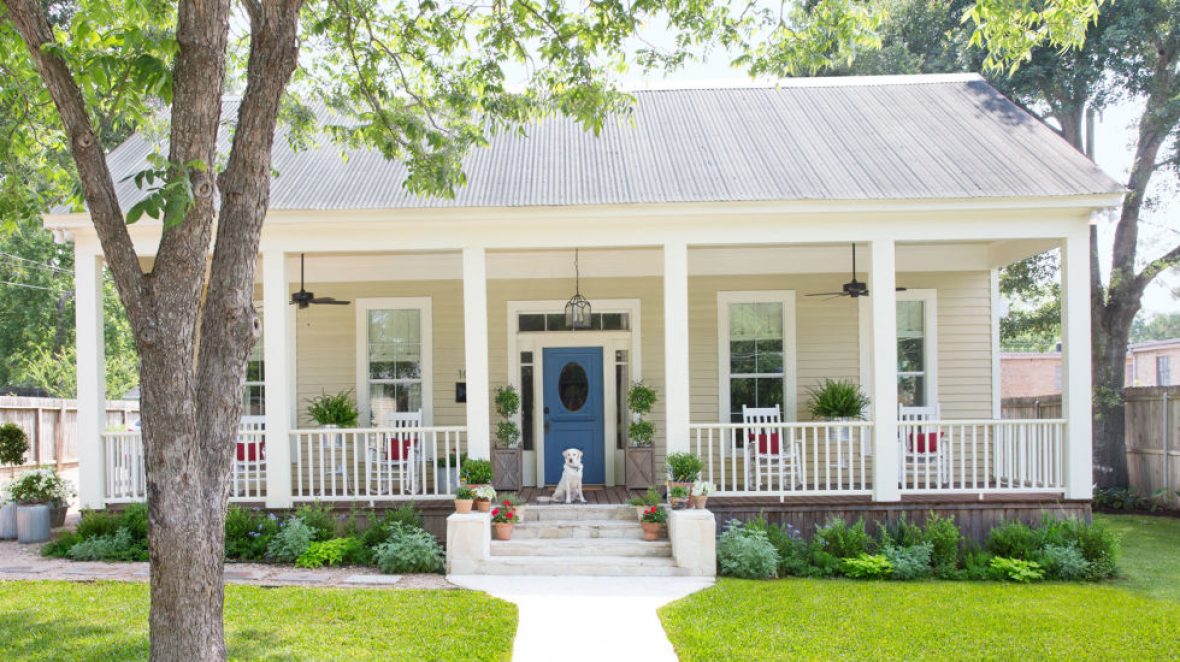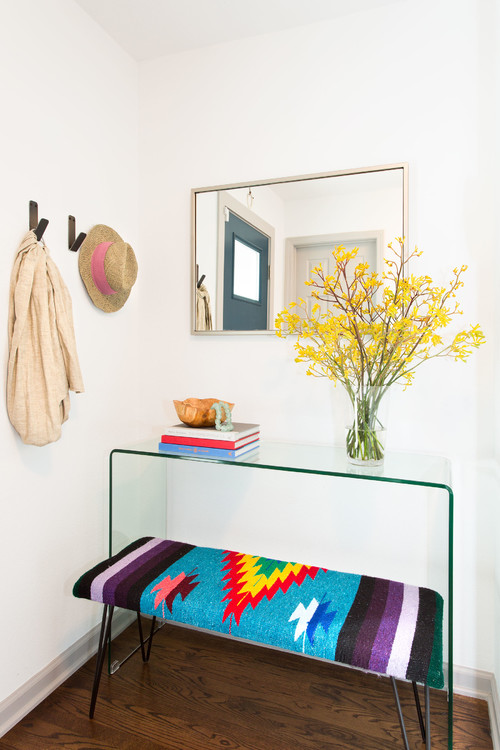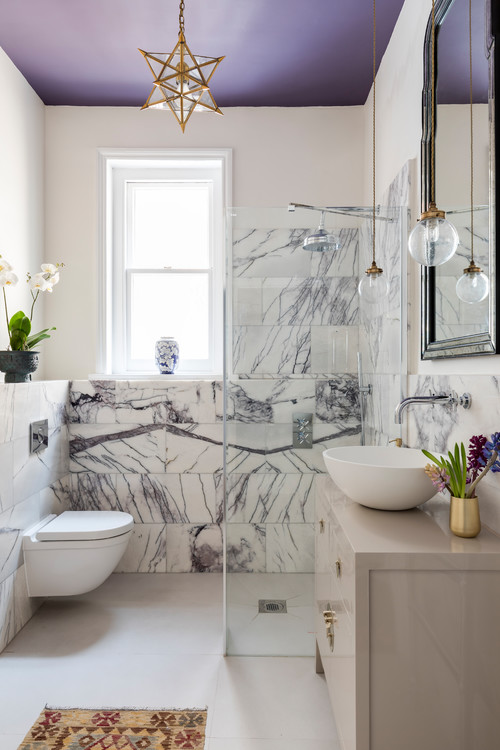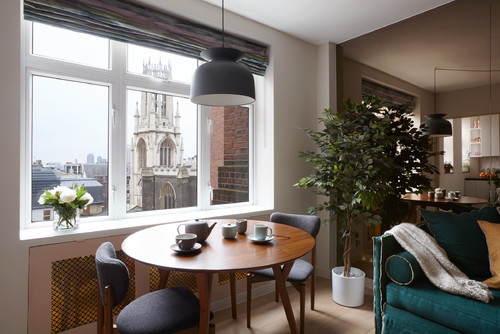
These DIY home improvements could help your home sell faster – and for more money!
The following is a guest post by Erin Vaughan from Modernize
Lace up your work boots, weekend warriors—it’s time to get busy! If you’re looking to improve your home’s value or make money back when you resell, you’ve come to the right place.
You’d be surprised at how much you can boost your ROI just by choosing the right kind of home improvement project. Unlike what you may have heard before, there’s no need to go for a full kitchen remodel or an addition when trying to boost your home’s value. There are plenty of improvements out there that could return nearly all of the money you put down when you resell—without having to pay a contractor first. So get out your drill, saw, and calculator and get started with one of these projects that you can have on the books in a mere 48 hours or less!

Kick Tired Outdoor Decor to the Curb
As the first thing buyers see when you sell, exterior decor ranks high on any homeowner’s list of improvements. In fact, many landscaping projects will return you over 100% of your investment.
Adding a new stone or brick patio, lining a pathway with pavers, or even just buying some brightly-colored planters and trimming the hedges all add significantly to your home’s desirability quotient. Even your greenest home repair newbies are well-equipped to handle most landscaping jobs!

Fluff Up Your Attic Insulation
It’s easy to get wrapped up in projects that deliver instant results—but buyers will be looking at more than your home’s aesthetics. Your property’s internal systems, like your plumbing and heating, will all be on the line, too.
Even if you plan to stay in your home for the long haul, there are a number of different updates you can DIY for long-term energy savings on your utility bills. Specifically, many older homes can benefit from attic insulation projects, which you can tackle yourself after learning the ropes.
Improving your attic insulation can net you an energy savings of anywhere from 10 to 50 percent. In older homes, builders often used insulation with an inadequate R-value, or they left attics unconditioned with no insulation at all. Considering that energy-efficient homes tend to have higher property values, particularly in locations where electricity costs are high, upgrading to an R-value of 30 to 60 is definitely a project that gives back—both in terms of finances and through a cozier home!

Give Drafts the Cold Shoulder
A great project to pair with your insulation upgrade is an attic floor sealing update. In fact, many parts of your home can probably benefit from air sealing, which keeps conditioned air from slipping through cracks and gaps in the walls and floors. In the attic, pay particular attention to the gaps around holes for wires and pipes, recessed lights, and your furnace flue or duct chase way.
Make sure to head downstairs and check for cracks that may have formed in your window caulking. Some 40 percent of heating and air conditioning may be lost through a home’s windows, so even minor updates here can make a real difference. Be sure to use silicone caulking, which is water resistant and won’t shrink as much as acrylic will over time.
If your windows are badly warped, drafty, or show signs of condensation between the glass, it may be time for a full window replacement. You’ll probably need to engage a contractor for that—but there are many energy efficient windows available today that can keep your home snugly fit—especially since you won’t be worrying about your utility bills.

Front-and-Center Upgrades
Front door replacements have some of the highest ROIs of any home improvement project out there—the overhead is low, since your average steel entry door costs between $200 and $500. But the returns are high. In fact, in some regions, a new front entry door can net over 100 percent of your initial investment!
The beauty of this project lies in how simple it is. No matter your skill level, you can probably wrestle a door off its hinges and install a new one—and it won’t take you a whole weekend. A door can easily be dressed up with an eye-catching coat of exterior paint or some flashy hardware. Plus, if you’re replacing a hollow-core door, you’ll see some energy savings as well, since solid models are much more energy-efficient.

Lighten Up a Little
Anything you can do to brighten up darker rooms will add lots of appeal to your home. In particular, homebuyers have been drawn lately to bright, open interiors that offer plenty of options in the lighting department.
Painting is one of the cheapest ways to get there. At $40 per gallon, you’re definitely not going to break the bank with this project. If you think you might put your house on the market soon, go for a neutral tone that will appeal to a wider audience—but don’t think you have to stick to just plain old whites and beiges. Many designers now consider light blushes, pale blues, and silvers as part of the neutral palette, and these colors will open up darker interiors as well. That’s one way to let in the light—without weighing down your credit card bills!
About the Writer

Erin Vaughan is a blogger, gardener and aspiring homeowner. She currently resides in Austin, TX where she writes full time for Modernize, with the goal of empowering homeowners with the expert guidance and educational tools they need to take on big home projects with confidence.
Leave a Reply
Name (required)
Email (required)
Website






























